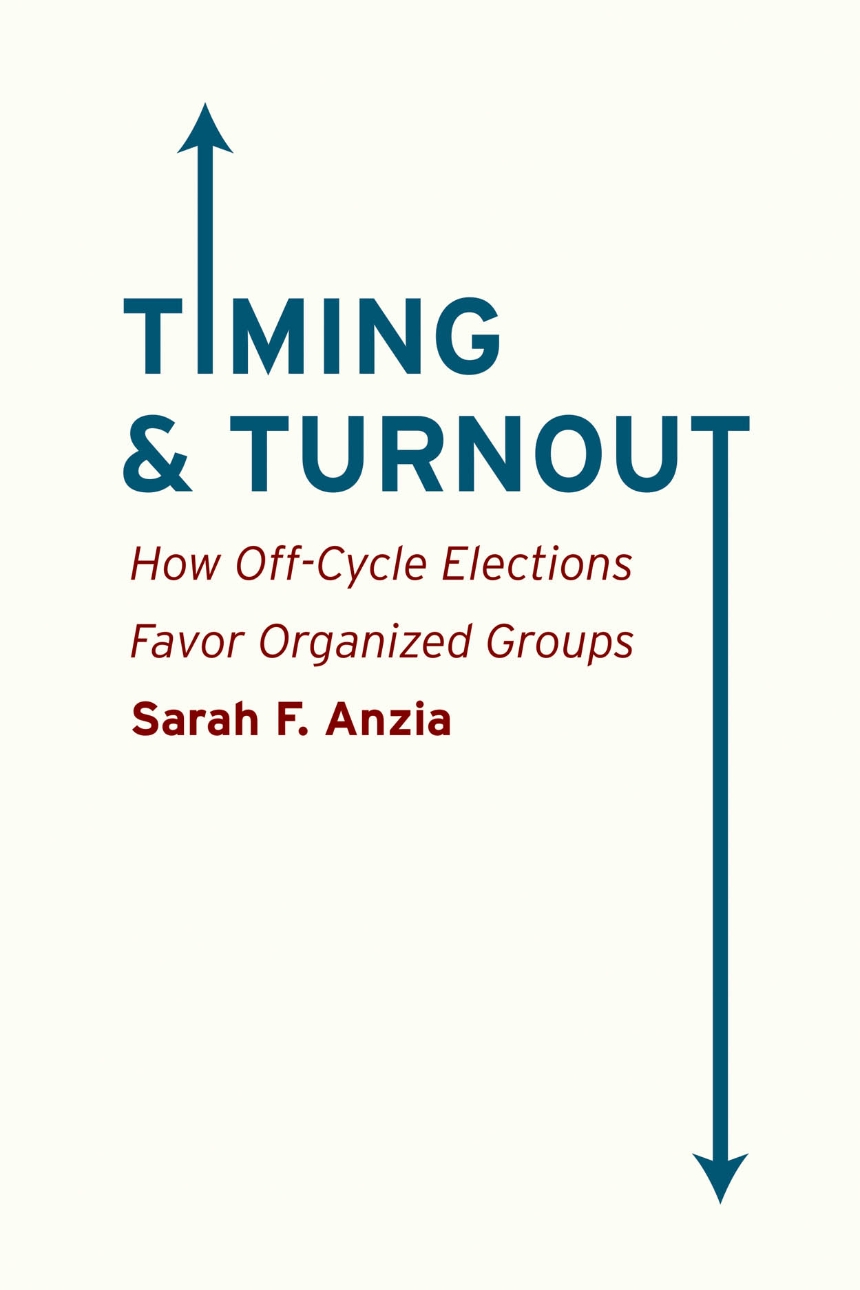Timing and Turnout
How Off-Cycle Elections Favor Organized Groups
The low turnout for off-cycle elections, Anzia argues, increases the influence of organized interest groups like teachers’ unions and municipal workers. While such groups tend to vote at high rates regardless of when the election is held, the low turnout in off-cycle years enhances the effectiveness of their mobilization efforts and makes them a proportionately larger bloc. Throughout American history, the issue of election timing has been a contentious one. Anzia’s book traces efforts by interest groups and political parties to change the timing of elections to their advantage, resulting in the electoral structures we have today. Ultimately, what might seem at first glance to be mundane matters of scheduling are better understood as tactics designed to distribute political power, determining who has an advantage in the electoral process and who will control government at the municipal, county, and state levels.
296 pages | 2 halftones, 13 line drawings, 28 tables | 6 x 9 | © 2013
Political Science: American Government and Politics, Political Behavior and Public Opinion, Public Policy
Reviews
Table of Contents
List of Illustrations
Acknowledgments
Chapter 1. Timing and Turnout: The Basics
Chapter 2. A Theory of Election Timing
Chapter 3. Partisan Power Play: Election Timing Politics in the Nineteenth Century
Chapter 4. Interest Groups and Election Timing Choice in the Twenty-First Century
Chapter 5. Estimating the Effect of Off-Cycle Election Timing: School Board Elections
Chapter 6. “What Election?” Timing, Turnout, and Policy in California Cities
Chapter 7. Implications for Democracy, Representation, and Institutional Stability
Appendixes
Notes
Index
Awards
Choice Magazine: CHOICE Outstanding Academic Title Awards
Won
APSA Urban and Local Politics Section: Dennis Judd Best Book Award
Won
APSA Section on State Politics and Policy: Virginia Gray Book Award
Won
